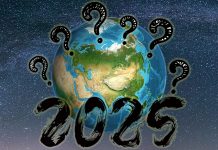ONE THING you have to say about US President Donald Trump is that he’s trying his best to live up to his campaign promises.
One of the first things that he did when he assumed office was formally abandon the Trans-Pacific Partnership (TPP) agreement. The 12-country TPP was a trade pact between the US and other Pacific Rim countries including Australia, New Zealand, Japan, Mexico, Brunei, Malaysia and Singapore. With the US abandoning the TPP, Trump is keeping his pledge to stop trade deals that he believes harm American workers.
The move dashed hopes around the world that Trump would moderate the protectionist stance that helped carry him to power. It puts China, which was excluded from the TPP, in a position to negotiate a similar trade deal with the remaining countries of the TPP. China is reportedly already doing that with its own version of a regional free trade pact.
However, many of the countries in the TPP already count China as their biggest trading partner. Thus, one would think that the motivating factors for a regional free trade pact involving China is driven by forces that have little to do with trade.
Meanwhile, one view that has emerged since Trump stepped into office is that the raising of trade barriers in the US could mark the end of globalisation. In fact, this was discussed by participants in the recent World Economic Forum (WEF) in Davos. In a speech at the forum, Chinese President Xi Jinping said the world must remain committed to promoting free trade and investment by opening up, and saying no to protectionism. “Pursuing protectionism is like locking oneself in a dark room. While wind and rain may be kept outside, so are light and air…. No one will emerge as a winner in a trade war,” he said.
Xi’s comments should be considered against the backdrop of China practising its own form of protectionism, in terms of information flow into the country and cross-border flows of the Chinese renminbi.
For instance, Beijing is happy to see fund flows into China but has become somewhat cagey about renminbi outflows from the mainland. Basically, what this tells us is that each country has its own unique set of priorities for its economy and populace.
Trump is now showing where US priorities will lie during his tenure as President, with his recent entry ban on nationals from seven Muslim-majority countries
A Big Market
As the US economy is the biggest in the world, no one can afford to ignore that market. Multinational corporations that have moved manufacturing out of the country do not want to risk being marginalised and will likely look to send some of these manufacturing operations back to the US. It may have a negative impact on their profitability, but it would be better for them to be on the right side of history.
For Asian countries that count the US as a major trade partner and host manufacturing facilities of multnational corporations, there may be some short-term pain. It will force them to pursue new economic strategies, engage in more innovative economic restructuring initiatives and form new kinds of alliances with regional counterparts and elsewhere. In this region, we might see the ASEAN economic integration process gain a new injection of momentum.
Is Trump Seeking Symmetry
Finally, it should be reiterated that Trump’s newly appointed public liaison official, Anthony Scaramucci, said something very interesting at the WEF. At the forum in an unofficial capacity, he said that it was wrong to assume that Trump was opposed to free trade. He said that Trump is simply seeking to ensure that trade deals were “symmetrical”, rather than organised as a means for the US to help other countries.
“We call those agreements free trade but they were free asymmetrically. So all we’re asking for now is to create more symmetry in these trade agreements,” Scaramucci said.
This suggests that the biggest economy in the world is calling for a level playing field in trade agreements. It could have a far-reaching impact on the deregulation of business environments by governments, global exchange rates, minimum wages, and work safety and conditions. Globalisation may then no longer be about a “race to the bottom”, and this could lead to a more equitable distribution of wealth that might narrow income gaps.
Thus It Was Unboxed by One-Five-Four Analytics presents alternative angles to current events. Reach us at 154analytics@gmail.com
Main image: Andrey_Popov / Shutterstock.com



















